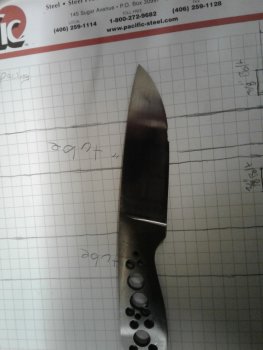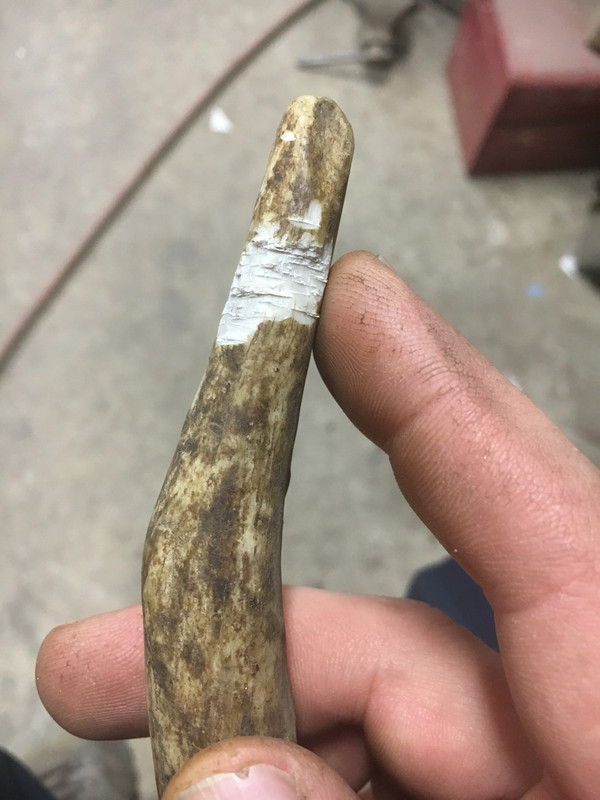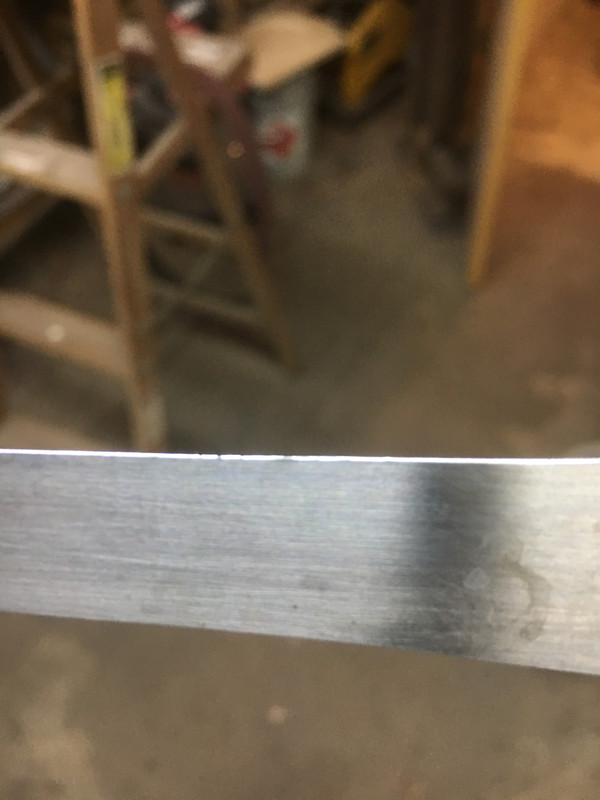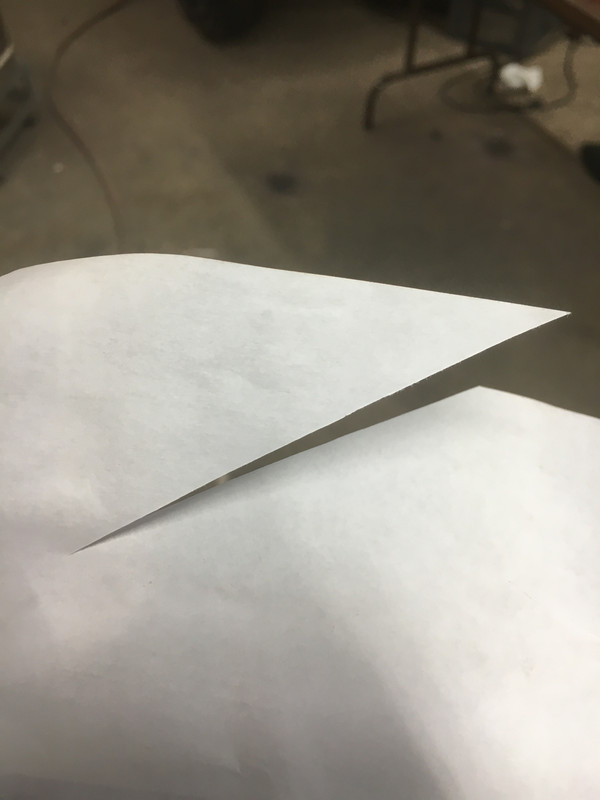Gene Kimmi
KNIFE MAKER
I had a fillet knife I made from 15N20 returned to me that has chips in the edge.
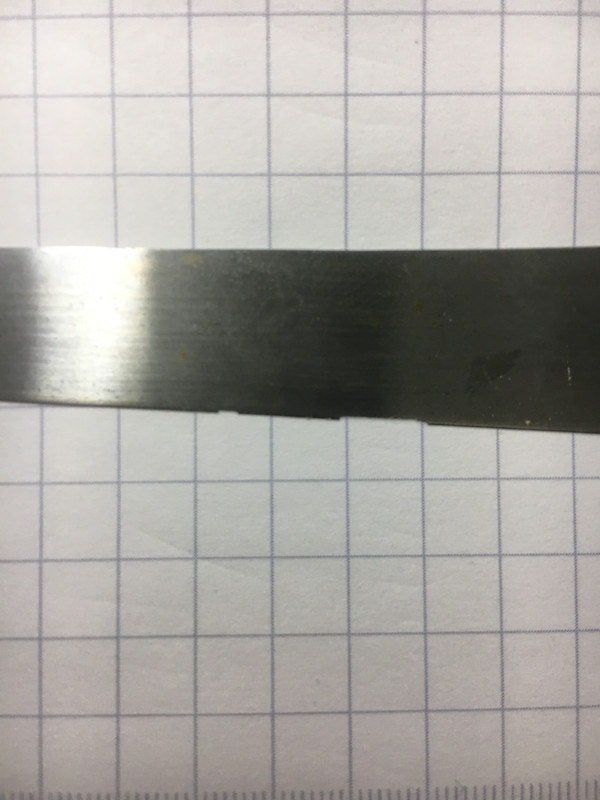
I have done the brass rod test with quite a bit of pressure and chopped into a piece of oak lumber and cannot get the knife to chip or deform the edges.
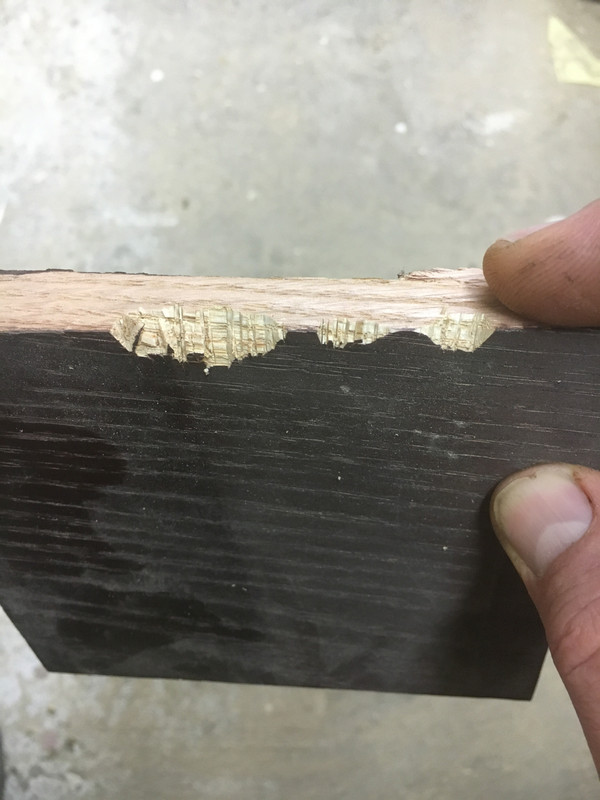
I've even push cut into the oak and twisted the knife with no edge damage. The blade is .010" thick behind the edge bevel, so I would think these tests would show a problem, but I'm not finding what it is.
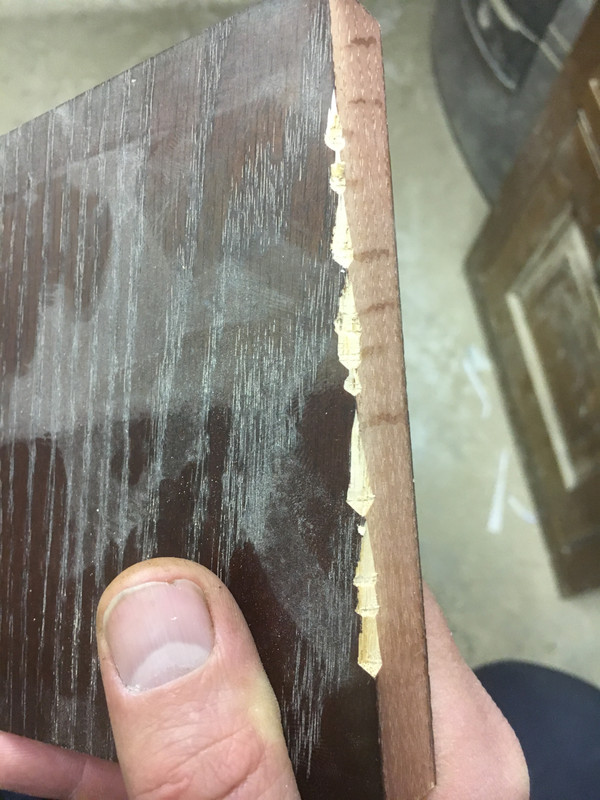
I'm at a loss here as to where to go with this blade to try to fix it. At first, I thought I would remove the handles and re-temper the blade at a higher temperature. But, not being able to reproduce any chipping, I'm not sure if that's the right step.
I was told they were using it to cut up fish and noticed it wasn't cutting like it used to. I will be making a new one to replace this one, but would like to fix this one for him also. Any ideas?

I have done the brass rod test with quite a bit of pressure and chopped into a piece of oak lumber and cannot get the knife to chip or deform the edges.

I've even push cut into the oak and twisted the knife with no edge damage. The blade is .010" thick behind the edge bevel, so I would think these tests would show a problem, but I'm not finding what it is.

I'm at a loss here as to where to go with this blade to try to fix it. At first, I thought I would remove the handles and re-temper the blade at a higher temperature. But, not being able to reproduce any chipping, I'm not sure if that's the right step.
I was told they were using it to cut up fish and noticed it wasn't cutting like it used to. I will be making a new one to replace this one, but would like to fix this one for him also. Any ideas?

